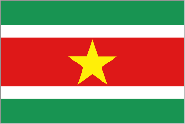Extreme Weather Events
Taxonomy Term List
Integrated Flood Management to Enhance Climate Resilience of the Vaisigano River Catchment in Samoa

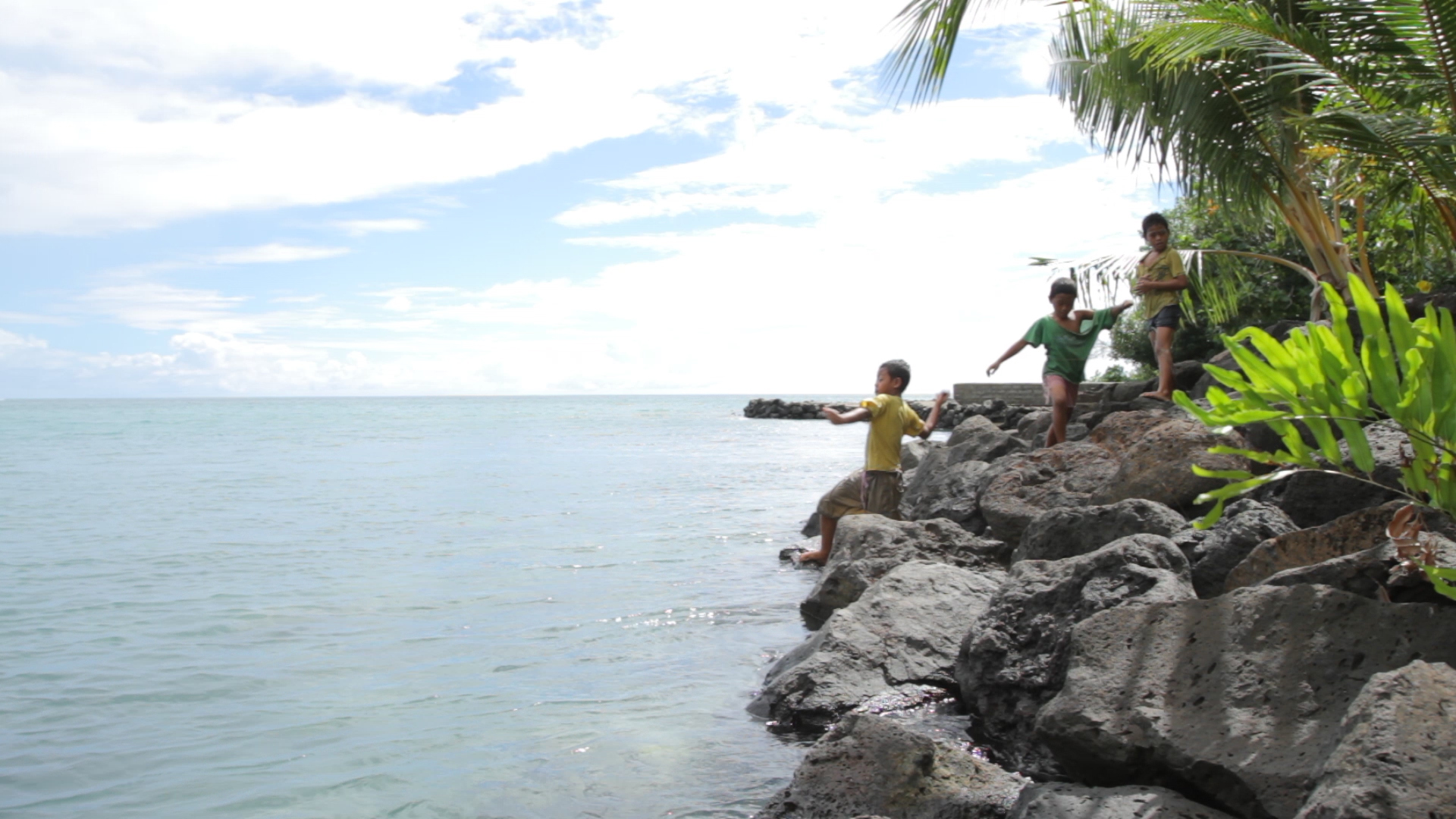

Newsletter
Vaisigano Catchment Project (GCF-VCP) Newsletter | Issue 29, August - September 2022
ProDocs
GCF resources will be used to implement a combination of integrated watershed and flood management works including both hard and soft measures. This includes upgrading river works to cater to increased water flows during flood events (taking into account the likelihood of the increased frequency of extreme events), ensuring that infrastructure works, and home dwellings, government and private-sector buildings are made more secure and provide adequate shelter in case of floods and their aftermaths. Additionally, the project will ensure that when floodwaters occur, the excess waters are channeled away through an effective, efficient, and fit-for-purpose drainage system. The project will consequently play a critical role in assisting the urban population and economy to effectively manage the inevitable increased intensity and frequency of flooding.
Direct benefits from these interventions include reduced risk of damage to public and private infrastructure/assets; reduced possibility of loss of life; and enhanced land value in flood-prone areas. Indirect benefits include reduced losses in income/sales; reduced costs of clean-ups, maintenance and repairs; reduced costs of relief and response efforts; and reduced possibility of health hazards. In addition to these 26,000 direct beneficiaries, the general population of Samoa will benefit from the safeguarding of critical economic assets and learning that will be generated.
In addition, mid and upstream ecosystem and community-based adaptation measures will enhance capture, infiltration, storage and delayed release of rainwater in soils and biomass, and water retention ponds will serve both climate-smart agribusiness development and combat degradation of vulnerable ecosystems through appropriate agro-forestry land-use practices.
Addressing Climate Change in Samoa
Recent extreme events have resulted in approximately US$200 million worth of damages during each event. Climate projections for Samoa suggest that the risk of climate induced events will increase, potentially undermining development progress in urban Apia where the majority of the population and economic activity is located.
Given the topography of the country, extreme events result in significant river discharge that results in flooding of lowland areas. Recent tropical events such as Cyclone Evan have caused significant damage to both public and private assets as a result of flooding, resulting in serious health impacts. Urban infrastructure has suffered considerably from the recurrence of flooding and is unable to cope as climate change-related events are expected to become more frequent and intense.
Projected climate change scenarios cited by the Australian Commonwealth Scientific and Industrial Research Organization (CSIRO) suggest that Samoa is expected to have more frequent and extreme rainfall events; more frequent and longer drought events; increased air and water temperatures; sea level rise; and more frequent extreme wind events.
The project represents the Government of Samoa’s initial steps in operationalizing a comprehensive flood management solution for the likely consequences of extreme events in Apia, the capital with about 80,000 people. In this project, three interlinked project outputs will be pursued:
- Capacities and information base strengthened for the Government of Samoa to pursue an integrated approach to reduce vulnerability towards flood-related risks;
- Key infrastructure in the Vaisigano River Catchment are flood-proofed to increase resilience to negative effects of excessive water; and
- Upgraded drainage in downstream areas to increase capacity and allow for more rapid outflow of flood waters.
'Launching of the Flood Alert Sirens (a first of its kind in Samoa) within the vicinity of the Vaisigano River Catchment Area', Government of Samoa, November 29 2022
'CSSP Market Day for Beneficiaries of the Green Climate Fund-Vaisigano Catchment Project (GCF-VCP) Ecosystem based Enterprise Development Programme (EbAEDP)', Government of Samoa, September 8 2022
'Celebrating the women at the helm of Samoa’s biggest ever climate change and disaster resilient project on International Women’s Day', March 8, 2019.
Monthly Project Newsletter, Issue 1, July 2019.
'Rebuilding the Lelata Bridge to be tougher and higher', Samoa Observer, January 23, 2019.
'GCF Vaisigano River Catchment Site Visit with Assistant Secretary General of the United Nations and Director of UNDP's Regional Bureau for Asia and Pacific, Haoliang Xu', UNDP Samoa Facebook, June 2018.
'Samoa kicks off climate adaptation project to benefit 1 in 3 citizens facing flood risk' UNDP, October 25, 2017. In the lead up to COP climate talks in Bonn, the launch of a Green Climate Fund-financed US$65 million project signals strong global support for climate-resilient development in Small Island Developing States.
'Every dollar counts in fight against climate change - New GCF Funding for Samoa' - Samoa Observer, December 16, 2016. Op-ed celebrating Somoa's recently approved US$58 million Green Climate Fund project.
YouTube
Learn more about the climate challenges facing Samoa, and how UNDP is working to address those challenges and reduce risks.
Samoa GCF-funded project to help address #climate-induced flooding
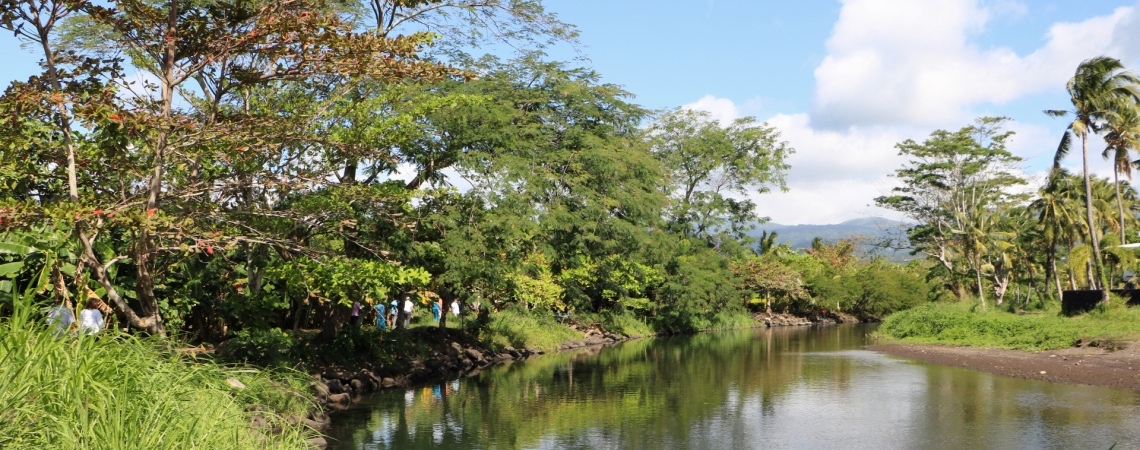
Output 1. Strengthening capacities and mechanisms for integrated approach to reduce flood-related risks in place.
Output 2. Key infrastructure in the Vaisigano River Catchment are flood-proofed to increase resilience to negative effects of excessive water.
Saving Lives, Protecting Agriculture Based Livelihoods in Malawi (M-Climes)
Climate change severely threatens sustainable development opportunities for Malawi. The country faces a number of climate-induced disasters including floods, droughts, stormy rains and strong winds. The intensity and frequency of climate-related hazards have been increasing in recent decades, due to climate change as well as other factors like population growth, urbanization and environmental degradation. Farmers and rural populations have been amongst the most affected. The impacts of climate hazards have severely disrupted food production, led to the displacement of communities, loss of life and assets, and caused an overall reduction of community resilience.
The “Saving Lives and Protecting Agriculture Based Livelihoods in Malawi: Scaling Up the Use of Modernized Climate Information and Early Warning Systems” (M-Climes) project will support the Government of Malawi to take important steps to save lives and enhance livelihoods at risk from climate-related disasters. The project focuses on Malawi’s technical, financial capacity, and access barriers related to weather and climate information (CI). These barriers will be addressed by investing in enhancing the hydro-meteorological capacity for early warnings (EWs) and forecasting; developing and disseminating tailored products for different actors (including smallholder farmers and fishers); and strengthening capacities of communities to respond to climate-related disasters.
PIFs
Climate change severely threats sustainable development opportunities for Malawi. The country faces a number of climate-induced disasters including floods, droughts, stormy rains, and strong winds. The intensity and frequency of climate-related hazards have been increasing in recent decades, due to climate change as well as other factors like population growth, urbanization and environmental degradation. Farmers and rural populations have been amongst the most affected. The impacts of climate hazards have severely disrupted food production, led to the displacement of communities, loss of life and assets, and caused an overall reduction of community resilience.
The “Saving Lives and Protecting Agriculture based Livelihoods in Malawi: Scaling Up the Use of Modernized Climate Information and Early Warning Systems” project will support the Government of Malawi to take important steps to save lives and enhance livelihoods at risk from climate-related disasters. The project focuses on Malawi’s technical, financial capacity, and access barriers related to weather and climate information (CI). These barriers will be addressed by investing in enhancing the hydro-meteorological capacity for early warnings (EWs) and forecasting; developing and disseminating tailored products for different actors (including smallholder farmers and fishers); and strengthening capacities of communities to respond to climate-related disasters.
The project is aligned with the Government of Malawi's national strategies such as the Malawi Growth and Development Strategy and the National Adaptation Programme of Action (NAPA). The design of the project followed extensive stakeholder consultations. This process allowed the project to gain the support of the relevant stakeholders including the community members from targeted districts, the civil society and local and international NGOs. The project is also supported by the pertinent government ministries and departments and local government with local offices in the targeted districts (DCCMS, DWR, MoAIWD).
Approximately 1.4M direct and 0.7M indirect beneficiaries (total 12% of the population) will gain access to critical weather information as a result of the project. It will reduce vulnerability of lives and livelihoods, particularly women’s, to impacts of climate change and extreme weather events. In addition, it will increase the resilience and enhance livelihoods of the most vulnerable people communities and regions.
Output 1: Expansion of networks that generate climate-related data to save lives and safeguard livelihoods from extreme climate events
- Activity 1.1: Expanding coverage of Meteorological and hydrological infrastructure through installation of AWS, hydrological monitoring stations, lightning detection systems, and lake-based buoys.
- Activity 1.2: Capacity-building of hydromet staff on operations & maintenance, data analysis, modeling, and forecasting.
Output 2: Development and dissemination of products and platforms for climate-related information/services for vulnerable communities and livelihoods
- Activity 2.1: Develop tailored weather/climate based agricultural advisories for 14 food insecure districts and disseminate through ICT/mobile, print, and radio channels
- Activity 2.2: Develop and disseminate tailored warnings and advisories for fishing communities of Mangochi, Salima, Nkhata Bay and Nkhotakhota around Lake Malawi
- Activity 2.3: Develop and deploy the flood and water resource modelling and decision support system to enhance coverage for disaster risk and water resource management
- Activity 2.4: Enablea demand-based model for climate information and services stimulating private sector engagement
- Activity 2.5: Knowledge sharing and management for development, dissemination and use of EW and CI to enhance resilience
Output 3: Strengthening communities capacities for use of EWS/CI in preparedness for response to climate related disasters
- Activity 3.1: Scale-up community-based EWS in flood-disaster prone areas of Karonga, Salima, Dedza, Nkhotakota, Nkhata Bay, Rumphi, Phalombe and Zomba
- Activity 3.2: Capacity development of national, district and community level actors on disaster and climate risk management
Project-level monitoring and evaluation will be undertaken in compliance with the UNDP POPP and the UNDP Evaluation Policy. The Project Manager that will be in charge of running the project on behalf of Department of Disaster Management Affairs (DoDMA) will be responsible for day-to-day project monitoring. S/he will develop annual work plans to ensure the efficient implementation of the project.
The UNDP Country Office will conduct, within other monitoring activities, annual supervision missions. The UNDP Country Office will be responsible for complying with UNDP project-level M&E requirements. Additional M&E, implementation quality assurance, and troubleshooting support will be provided by the UNDP Regional Technical Advisor as needed.
A Project Implementation Report (PIR) will be prepared for each year of project implementation. The Project Manager, the UNDP Country Office, and the UNDP Regional Technical Advisor will provide objective input to the annual PIR. The Project Manager will ensure that the indicators included in the project results framework are monitored annually well in advance of the PIR submission deadline and will objectively report progress in the Development Objective tab of the PIR. The annual PIR will be shared with the Project Board and other stakeholders.
An independent mid-term review (MTR) process will be undertaken and the findings and responses outlined in the management response will be incorporated as recommendations for enhanced implementation during the final half of the project’s duration.
An independent terminal evaluation (TE) will take place no later than three months prior to operational closure of the project. UNDP Country Office will include the planned project terminal evaluation in the UNDP Country Office evaluation plan, and will upload the final terminal evaluation report in English and the management response to the public UNDP Evaluation Resource Centre (ERC) (www.erc.undp.org).The MTR and TE will be carried out by an independent evaluator. The evaluation report prepared by the independent evaluator is then quality assessed and rated by the UNDP Independent Evaluation Office.
Protecting Malawi with climate information and early warning systems, published by the Green Climate Fund, December 2019
Strengthening climate information in food insecure districts in Malawi
Henry Msiska is a 49-year-old Lead Farmer from Mziliwanda village in Nchenachena in the northern district of Rumphi. To Msiska, delayed onset of rains is undoubtedly the biggest challenge in his agri-business. “I remember some years back, the rainy season used to start in November and last in April or May. But nowadays, the rain would start in December and end even before March,” observes Msiska. Due to this unpredictability of the present-day rainfall patterns his crops have been subject to new pests and diseases, a development that has drastically been reducing his farm yields. Despite growing more climate-resilient crops, it has still been very difficult for him to put more focus on them (crops) due to the changes in the climatic conditions. Msiska is not alone in this predicament as this phenomenon affects thousands of other farmers across Malawi. However, with the use of tailored-weather information and advisories, that he and other community members are expected to be receiving through mobile phones, print and radio channels, under the M-CLIMES Project, such challenges are expected to be a thing of the past. The M-CLIMES Project, which is being implemented with funding from the Green Climate Fund (GCF) aims at increasing the farmers’ adaptive capacity and their decision-making through timely provision of climate-related risks information.
UN support enhances delivery of improved weather services in Malawi
The Department of Climate Change and Meteorological Services has said UN capacity building support to the department has improved their capacity to generate, analyse and disseminate weather information in the country. The department’s deputy director Rodrick Walusa said this on 27th July 2018 when the UN Resident Coordinator, Maria Jose Torres, visited their offices in Blantyre to appreciate impact of UN support to the department. “UNDP has provided us with support to improve our infrastructure for handling weather information,” said Walusa. “We have transformed many of our weather stations into automated ones. With UNDP support, 10 automated weather stations have been fully automated and additional 33 automated weather stations are being procured by UNDP for installation in some of the remaining sites across the country.”
Farmers and fishers benefiting from digitized weather data in Malawi
The exercise which is set to run for 17 days is being conducted in Zomba District under the Green Climate Fund (GCF) funded ‘Saving lives and Protecting Agriculture-based Livelihoods in Malawi: Scaling up the use of Modernized Climate information and Early Warning Systems (M-CLIMES), being implemented by the Department of Disaster Management Affairs (Dodma).
The DCCMS Chief Meteorologist, Mr. Fred Kossam, said that the digitization of climate data is expected to bring many benefits to Malawi and will provide a fundamental building block for climate change adaptation and disaster management in the country by improving the accuracy of seasonal rainfall forecast.
The positives of preparing for disaster
Knowledge is power. In terms of climate change, this translates into using a growing understanding of how rising global temperatures lead to localised weather disasters. This improved knowledge can help reduce the physical and social devastation of climate change by providing early warning...
While the landlocked nation of Malawi is highly susceptible to droughts, it also provides an example of how flooding can pose a problem for a number of African countries – even those located far from coastlines. Lake Malawi, one of the largest lakes in the world, is a central geographical and economic feature of the country. A GCF project in Malawi being implemented by the United Nations Development Programme (UNDP), a GCF Accredited Entity, is installing automatic weather stations and lake-based weather buoys to increase the capacity to identify and forecast flood risks.
A major component of this USD 16.3 million early warning project is ensuring that climate information is transmitted to vulnerable farming and fishing communities around the lake. The sharing of climate information to the right people is a key part of all effective early warning systems. In the case of the Malawi project, this will include making sure affected communities know what to do with enhanced weather information. The capacity of local communities, district councils, and national agencies to respond to emergencies will be strengthened through training and improved emergency services.
Malawi's farmers watch climate change
Malawi: Illiteracy Levels Affecting Meteorological Services
Department of Climate Change and Meteorological Services has attributed its information communication dissemination challenge to high illiteracy levels in the country, saying people fail to instantly understand the information they present at once. Amos Ntonya, a Meteorologist in the Department of Climate Change and Meteorological Services said this on Tuesday during a meeting organised to sensitise Nkhotakota District Executive Committee on 'Saving Lives and Protecting Agriculture-based Livelihoods in Malawi: Scaling up the Use of Modernised Climate Information and Early Warning Systems (M-CLIMES)' Project.
Maravi Post
The Department of Disaster Management Affairs (DODMA) in conjunction with the United Nations Development Programme (UNDP) will embark on scaling up the use of modernised climate information and early warning systems (M-CLIMES) Project aimed at reducing vulnerability of communities to climate change. Briefing the District Executive members (DEC) in Mchinji on Friday, Project coordinator of M-CLIMES DODMA, Rabi Narayan Gaudo, said the six year project (2017-2023) will target two million beneficiaries including farmers, fishermen and flood-prone communities. “The Information Systems Programme will help reduce vulnerability to climate change impacts on lives and livelihoods, particularly of women, from extreme weather events and climate change, and strengthen community capacities in preparedness for response to climate related disasters,” he said. Gaudo said through the project, automated weather stations will be installed in 19 districts, automated rain gauges will be installed for enhanced community early warnings, and all 21 districts will benefit from improved accurate and reliable climate weather forecasts for agriculture.
New climate project to support 3 million Malawians
4 October 2017, Lilongwe
The Government of Malawi, through the Department of Disaster Management Affairs (DoDMA) and with support from the United Nations Development Programme (UNDP), has officially launch a new project to scale up the use of modernized early warning systems and climate information across 21 of the country’s 28 districts. The project called Saving Lives and Protecting Agriculture-based Livelihoods in Malawi: Scaling Up the Use of Modernized Climate Information and Early Warning Systems (M-CLIMES), is co-financed by the Green Climate Fund (GCF), a global fund created to support efforts of developing countries to respond to the challenge of climate change. The M-CLIMES project will reach an estimated three million people in the country with lifesaving early warnings, and improve the monitoring, packaging and distribution of valuable climate information that can save lives, protect livelihoods, and inform decision-making on development plans.
Scaling Up the Use of Modernized Climate Information and Early Warning Systems in Malawi
New UNDP-Supported Project Funded by the GCF Works to Reduce Vulnerability to Climate Change Impacts
By Srilata Kammila
A recently approved project supported by the UNDP and funded through the Green Climate Fund is providing new opportunities to scale up the use of climate information and early warnings in Malawi. The innovative $11 million project focuses on building weather- and climate-related services and has the potential of reaching approximately 2 million people, providing farmers, fishers and communities impacted by a changing climate with the information they need to protect lives and build livelihoods. This includes investing in the use of climate information for planning agricultural and on-farm activities, providing warnings of severe weather for fishers on Lake Malawi, improving flood forecasting and monitoring, and fostering information exchanges through mobile platforms....
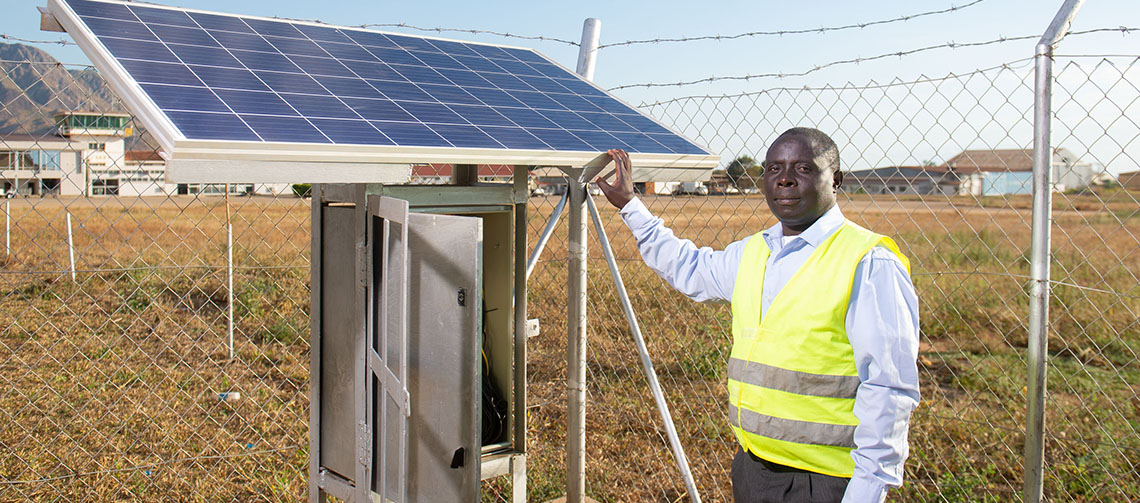
Output 1: Expansion of networks that generate climate-related data to save lives and safeguard livelihoods from extreme climate events
Output 2: Development and dissemination of products and platforms for climate-related information/services for vulnerable communities and livelihoods
Output 3: Strengthening communities capacities for use of EWS/CI in preparedness for response to climate related disasters
Strengthening Community Resilience to Climate Induced Natural Disasters in the Dili to Ainaro Road Development Corridor, Timor Leste
The government of Timor-Leste is currently investing heavily in transport infrastructure as a basis for securing the country’s long-term development goals. These investments are at risk as a result of climate change and therefore require a strategy to ensure their long-term sustenance. The Dili to Ainaro development corridor is one such region that is increasingly at risk from climate change and disaster related impacts including localized flooding, landslides and strong winds. Therefore, this project will focus on the populace dependent on critical economic infrastructure to make it more resilient through prevention and preparedness measures. Consequently, this will help to secure the medium to long-term development benefits of vulnerable local people of this region.
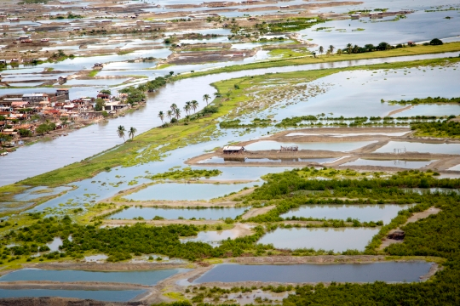
PIFs
Timor Leste – LDCF Project Identification Form (February 2013)
(More information to come)
The project has three main components with the following associated outcomes –
- Improved climate and disaster risk management is enabled through the establishment of a national training and knowledge hub focusing on climate risk and vulnerability assessment, damage and loss assessment, contingency planning among others (Outcome 1.1) and; the extension of national DRM policy and institutional roles to address climate change and disaster risk reduction measures, including assessment methods etc. (Outcome 1.2).
- Climate and disaster risk planning along with its budgeting and delivery is strengthened including the strengthening of district and sub-district Disaster Management Committees and District Disaster Operation Centres to plan, budget and deliver climate induced disaster prevention financing (Outcome 2.1) and; design of community to district level EWS systems for climate induced extreme events (Outcome 2.2).
- Investments are made in climate resilient community-based adaptation measures including community level climate change vulnerability and risk assessments with a specific focus on gender (Outcome 3.1) and; design and implementation of community level watershed management measures to reduce direct physical impacts of high intensity rainfall events in climate vulnerable hotspots along the Dili to Ainaro development corridor (Outcome 3.2).
(More information to come)
(More information to come)
'Joint Monitoring Dili to Ainaro Road Development: Strengthening community resilience in municipalities of Ermera, Aileu, Manufahi and Ermera', UNDP Timor-Leste, May 29, 2019.
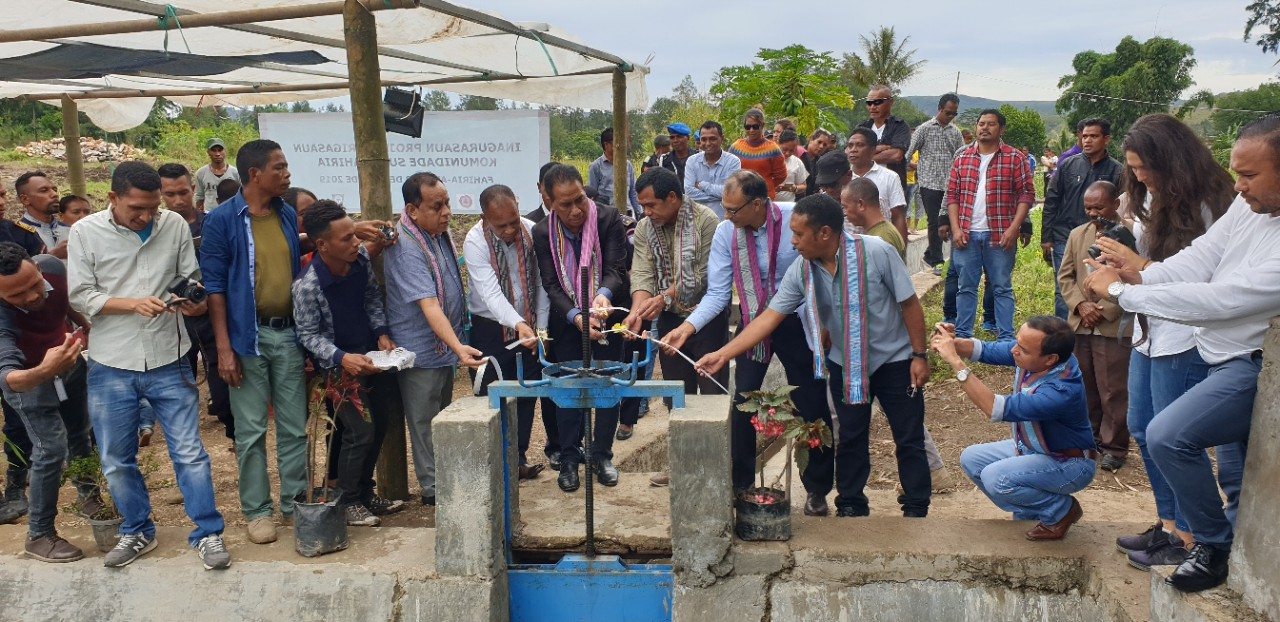
Implementing adaptation priorities through national development plans in Malawi
Extreme weather events have adversely impacted Malawi’s food security, water security, energy supply, infrastructure, human health and the sustainable livelihoods of family households. Further, the unsustainable use of natural resource costs Malawi USD191 million or 5.3% of GDP every year with the resulting forest cover in the country decreasing from 41% in 1990 to 35% in 2008.
This GEF-LDCF funded project, Implementing urgent adaptation priorities through strengthened decentralized and national development plans in Malawi, therefore looks at mainstreaming disaster risk reduction into sustainable development policies and planning processes at all levels of government, while establishing an effective system to identify, assess and monitor disaster risks including early warning systems in the country.
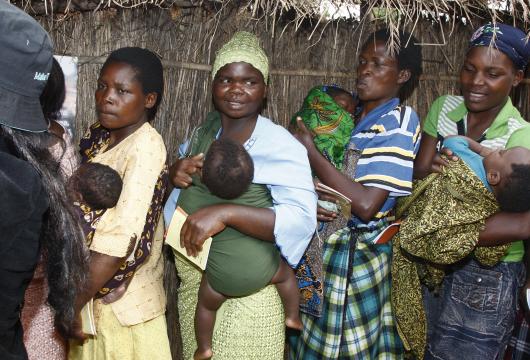
PIFs
(More Information to come)
The project has 3 primary components with associated outcomes –
- Integrated adaptation planning at District and Provincial levels including institutional analysis to determine CCA expenditures and CCA expenditure gaps within District level budgets (Outcome 1.1); Professional training on climate change integration in local development planning, policies (Outcome 1.2); Participatory assessments on vulnerability and adaptation to prioritize community CCA measures (Outcome 1.3); Community meetings to develop district-level disaster risk reduction and climate change adaptation plans for 4 vulnerable districts (Outcome 1.4); Integration of CCA priorities into the District Development Plans and budgets, and Local Council annual investment plans (Outcome 1.5); Integration of CCA resilience principles, priorities and role definition into development of district policies and regulations (Output 1.6); Integration of CCA resilience principles into results based management training undertaken in UNDP-supported governance programmes (Output 1.7); Addition of CCA vulnerability/CCA resilience indicators to district level databanks (developed in UNDP-supported governance programmes) for planning purposes (Output 1.8) and; Development of an incentive plan to support the effective deployment of roles and responsibilities (Output 1.9)
- Implementing urgent adaptation measures through decentralized planning processes including baseline rural development investments adjusted to become resilient to climate change (Output 2.1); Implementation of adaptation measures defined by communities during the development of the District-level adaptation plans to promote drought and flood management and climate resilience (Output 2.2); Provision of technical training and other support as defined by communities to implement the CCA plans sustainably (Output 2.3) and; Provision and use of weather forecast information on short timescales to manage risks to their livelihoods (Output 2.4).
- Implementing urgent adaptation measures through support to climate change policy processes and development of regulatory and fiscal frameworks at national level. This will include adjusting of budget preparation guidelines issued by Ministry of Finance to include climate change adaptation (Output 3.1); Training of 100 technical staff and managers in 5 relevant ministries to facilitate the investment plan development process (Output 3.2); Development of economic costing of adaptation priorities, based on public expenditure review and gap analysis (Output 3.3); Setting up of support programme for climate change adaptation costing work (Output 3.4); Integration of adaptation costing into a national, multi-sector adaptation investment plan (Output 3.5); Incorporation of adaptation investment priorities into the spending plans in 3 relevant ministries by 2014 (Output 3.6) and; Creation of regulatory and fiscal incentives to stimulate climate risk reduction by the non-government sector identified for three priority sectors (Output 3.7).
(More Information to come)
(More Information to come)
Supporting communities in climate change adaptation activities in Malawi
It cannot be debated that in Malawi, the livelihood of many people is heavily dependent on rain-fed agriculture. However, in recent years, the adverse impacts of Climate Change have been making the agriculture sector vulnerable. With the prolonged dry spells, seasonal droughts, changes in rainfall patterns and floods characterising the rainy seasons; these climate Change effects have been posing a serious risk to the productivity and profitability of crop farming in the country. To mitigate these challenges, UNDP in Malawi has been working hand in hand with the Government of Malawi to map pathways aimed at building resilient communities and minimize disruptions from climate disasters that affect everyday life and the local economy. The Government of Malawi - through the Ministry of Natural Resources, Energy and Mining, with support from UNDP and the Global Environment Facility (GEF) Least Developed Countries Fund - is implementing a project in 3 districts namely; Nkata-bay, Zomba and Ntcheu, to support the implementation of adaptation priorities through strengthened, decentralized and national development. The project aims at establishing and then demonstrate the institutional framework required to mainstream climate resilience and adaptation into development planning at local and national levels.
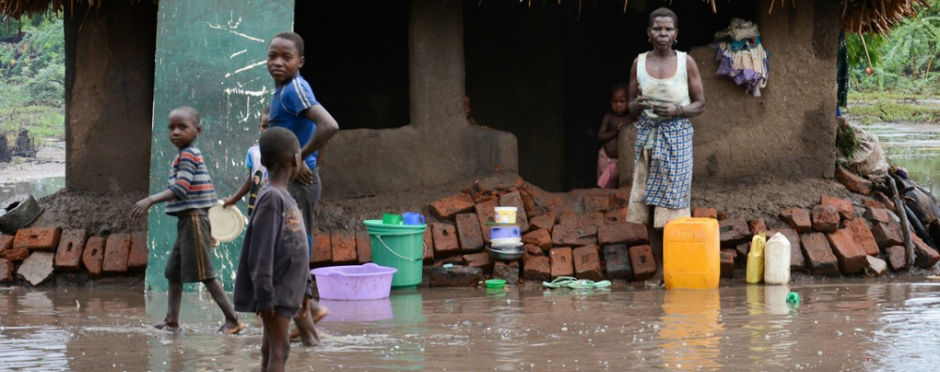
Community Disaster Risk Management in Burundi
The overarching goal of the project is to safeguard development benefits for vulnerable communities from future climate change induced risks. The community disaster risk management project will enhance local climatic governance by building capacity of key actors and providing necessary risks management tools (e.g. contingency plans, EWS). The project will also promote sustainable and equitable economic growth through the adoption of adaptation-related technologies aiming to rehabilitate and protect vulnerable communities assets
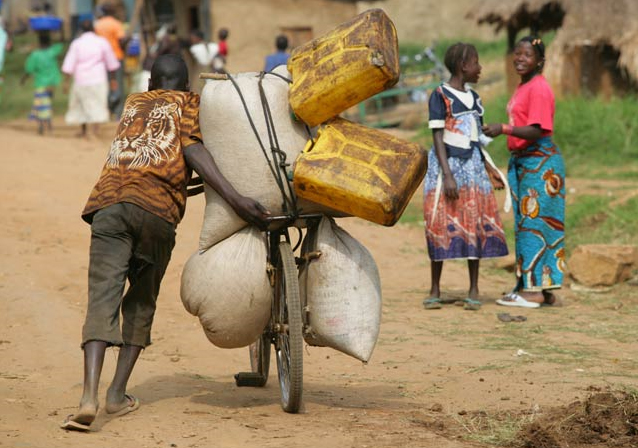
PIFs
The project is expected to have the following outcomes –
Capacity for disaster risks preparedness is developed through the establishment of early warning systems (Outcome 1.1); At least 50 staff from Bujumbura communal services and relevant ministry support services and about 400 people from vulnerable communities are trained to identify cost‐effective adaptation investments options (Outcome 1.2); Hazard risk maps are developed through livelihoods and infrastructure risk assessment with gender-focused analysis (Outcome 1.3); Policy actions are undertaken such as the revision of Congo-Nile watershed’s hydrological plans (Outcome 1.4) and; Local institutions and community groups are trained in the management and maintenance of tree plantation and anti-erosion (Outcome 1.5).
Effective disaster risk responses are established for long term and climate resilient emergency and reconstruction programme through protection of unstable grounds/ slopes and banks by planting 50,000 ha of specific trees and herbaceous/shrubby quickset hedges in Bugasera (Outcome 2.1); 25 km of anti-erosion small scale infrastructure are installed in Mumirwa (Outcome 2.2) and; Flood control in Bujumbura is established through excavation of 60 km of major river channel (Outcome 2.3).
Strengthening Coordination for Effective Environmental Management (STREEM) in the Philippines
The STREEM Project aimed to generate global environmental benefits through improved coordination in the implementation of the three Multilateral Environmental Agreements (MEA), also referred to as the Rio Conventions, in the Philippines.
Specifically the project intended to establish/strengthen cross-sectoral/convention institutional and coordination structures and mechanism at the local and national levels. The project was designed to comply with the country's commitments under the MEAs and ensure mainstreaming of MEA activities in the work plan of the concerned national government agencies while at the same time enhancing synergies, collaboration, coordination and complementation of activities and tasks among relevant actors.
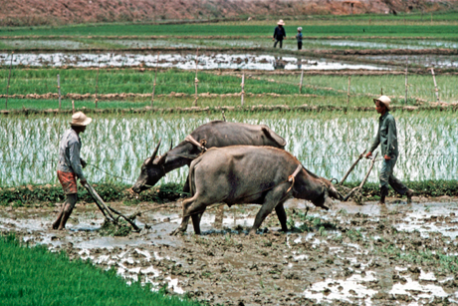
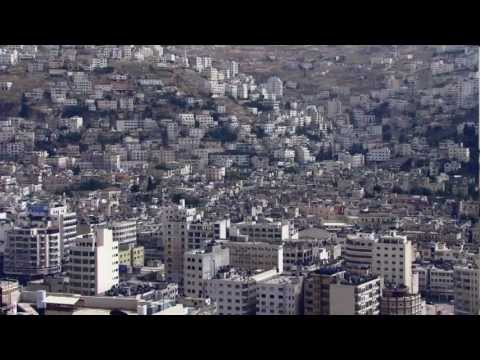
ProDocs
Strengthening Coordination for Effective Environmental Management (STREEM) in the Philippines - Project Document (2009)
The Philippines is a South East Asian archipelagic country of approximately 300,000 km2 distributed over approximately 7,000 islands and maintains a population of approximately 82 million. It has a Human Development Index of 0.753, placing it 83rd amongst 177 countries, and a GDP per capita of US$1,026. This figure, however translates to great wealth disparities and high levels of poverty in remote areas and amongst indigenous peoples. Despite recent improvements, poverty remains the main development challenge. Economic growth and poverty alleviation are heavily dependent on the primary productive sectors (agriculture, fisheries and forestry) which, in turn, are dependent on a reliable supply of environmental and natural resources services and goods.
As a result of poor management, over the last 50 years, severe natural resources degradation has a taken a toll. The country now has one of the lowest forest covers per capita in Asia in the tropics and many coastal and marine ecosystems have collapse. For example, 45% of arable land has been moderately or severely eroded. Also, as an example, landslides (resulting from a complex combination of natural circumstances, climate change and poor land management) led to the loss of at least 18,339 lives in the years 2000, as well as causing untold socio-economic damage.
The government has taken steps to reverse these negative environmental trends, introducing innovative institutional and legal reforms for sustainable natural resources management. These include the strengthening of the natural resources function in government agencies, and a comprehensive decentralization process. Importantly, the Philippines also quickly moved to ratify the Rio Conventions and establish an implementation framework.
A recent comprehensive and fully participatory assessment of capacity to implement the Rio Conventions identified five priority capacity areas for implementation. The STREEM projects responds to one of these, i.e. ‘cross-sectoral policymaking’. In short, the Assessment determined that many committed stakeholders at all levels are undertaking various tasks related to the Conventions, but a lack of coordination is leading to wastages, loss of synergy, loss of economies of scale, and duplication.
The STREEM project will address these issues through an interconnected package of activities at national and local levels. At the national level, the project will first establish an inter-Convention coordination mechanism and the related infrastructure. It will then develop a series of tools designed to pragmatically support coordination at the local levels and in the implementation of activities. These tools will include an incentive system for local stakeholders. The project will then pilot these tools at the pilot site in Puerto Princesa Subterranean River National Park and surrounding areas, and will simultaneously develop local capacity for coordination. Finally, based on the lessons learnt and experience acquired from the pilot site, the project will refine the tools and replicate their use through national, international and local partners.
The Project’s main goal is to generate global environmental benefits through improved coordination with respect to the implementation of cross-cutting issues within Multilateral Environmental Agreements (MEAs) in the country.
Specifically the project aims to:
- establish/strengthen cross convention institutional and coordination structures and mechanisms at the local and national levels
- finalized the tools generated from experience and lessons learned and replicate them across the country
The Government of the Philippines, through the Department of Environment and Natural Resources (DENR) received a grant from the United Nations Development Programme (UNDP) and the Global Environment Facility (GEF) to implement the project “Strengthening Coordination for Effective Environmental Management (STREEM)”. The project aims to generate global environmental benefits through improved coordination with respect to the implementation of cross-cutting issues within Multilateral Environmental Agreements (MEAs) in the country.
Specifically, the project will look into the issues and concerns that restrain effective implementation of the three Rio Conventions namely United Nations Convention on Biological Diversity (UNCBD), United Nations Convention to Combat Desertification (UNCCD) and United Nations Framework Convention on Climate Change (UNFCCC)).
The project STREEM will address the issues through a series of consultation and coordination activities at the national down to the local level. At the national level, the project will utilize existing mechanism for effective coordination among three Focal Point Agencies (FPAs) (i.e. DENR-PAWB, DENR- EMB & DA-BSWM) and consequently develop a series of tools and incentive systems designed to pragmatically support coordination and implementation of MEA activities at the local level. The Project will pilot these tools in Puerto Princesa Subterranean River National Park (PPSRNP) and the surrounding areas aimed at strengthening local capacity for coordination. The final step would be to finalize these tools generated from experience and lessons learned and to replicate them across the country.
- Outcome 1: National Rio Convention stakeholders are effectively coordinating the preparation and implementation of related policies, programmes, projects and activities.
- Output 1.1: Establish a National Technical Coordination Committee and Office
- Output 1.2: Establish a Business Plan for the Committee and Office in order to develop a coherent approach to the nine cross-cutting thematic areas
- Output 1.3: Establish an Initial Incentive System in line with the Business Plan and through the Committee. The project will support national stakeholders in the design of the national system of incentives for coordinated implementation of the Conventions.
- Output 1.4: Develop a series of tools to promote coordination at the local level in line with the Business Plan and through the Committee in line with the priorities established under the nine cross-cutting thematic areas
- Outcome 2: Local and national stakeholders are addressing key global environmental issues in and around PPSRNP in a coordinated manner.
- Output 2.1: Define a clear set of priorities and sequences
- Output 2.2: Increased coordination and substantive outputs as a result of piloting the tools.
- Output 2.3: Increased understanding of the Incentive System and the potential tools
- Outcome 3: International, national and local partners have adopted the Tools prepared under the project.
- Output 3.1: Finalized tools for promoting local level coordination
- Output 3.2: Institutionalize the incentive system
- Output 3.3: Tools, Incentive System, and all Project outputs disseminated to local, national and international partners.
Project Start:
Project Inception Workshop: will be held within the first 2 months of project start with those with assigned roles in the project organization structure, UNDP country office and where appropriate/feasible regional technical policy and programme advisors as well as other stakeholders. The Inception Workshop is crucial to building ownership for the project results and to plan the first year annual work plan.
Daily:
Day to day monitoring of implementation progress: will be the responsibility of the Project Manager, based on the project's Annual Work Plan and its indicators, with overall guidance from the Project Director. The Project Team will inform the UNDP-CO of any delays or difficulties faced during implementation so that the appropriate support or corrective measures can be adopted in a timely and remedial fashion.
Quarterly:
Project Progress Reports (PPR): quarterly reports will be assembled based on the information recorded and monitored in the UNDP Enhanced Results Based Management Platform. Risk analysis will be logged and regularly updated in ATLAS.
Annually:
Annual Project Review/Project Implementation Reports (APR/PIR): This key report is prepared to monitor progress made since project start and in particular for the previous reporting period (30 June to 1 July). The APR/PIR combines both UNDP and GEF reporting requirements.
Periodic Monitoring through Site Visits:
UNDP CO and the UNDP RCU will conduct visits to project sites based on the agreed schedule in the project's Inception Report/Annual Work Plan to assess first hand project progress. Other members of the Project Board may also join these visits. A Field Visit Report/BTOR will be prepared by the CO and UNDP RCU and will be circulated no less than one month after the visit to the project team and Project Board members.
Mid-Term of Project Cycle:
Mid-Term Evaluation: will determine progress being made toward the achievement of outcomes and will identify course correction if needed. It will focus on the effectiveness, efficiency and timeliness of project implementation; will highlight issues requiring decisions and actions; and will present initial lessons learned about project design, implementation and management. Findings of this review will be incorporated as recommendations for enhanced implementation during the final half of the project’s term.
End of Project:
Final Evaluation: will take place three months prior to the final Project Board meeting and will be undertaken in accordance with UNDP and GEF guidance. The final evaluation will focus on the delivery of the project’s results as initially planned (and as corrected after the mid-term evaluation, if any such correction took place). The final evaluation will look at impact and sustainability of results, including the contribution to capacity development and the achievement of global environmental benefits/goals. The Terminal Evaluation should also provide recommendations for follow-up activities.
Project Terminal Report: This comprehensive report will summarize the results achieved (objectives, outcomes, outputs), lessons learned, problems met and areas where results may not have been achieved. It will also lie out recommendations for any further steps that may need to be taken to ensure sustainability and replicability of the project’s results.
Learning and Knowledge Sharing:
Results from the project will be disseminated within and beyond the project intervention zone through existing information sharing networks and forums.
The project will identify and participate, as relevant and appropriate, in scientific, policy-based and/or any other networks, which may be of benefit to project implementation though lessons learned. The project will identify, analyze, and share lessons learned that might be beneficial in the design and implementation of similar future projects.
Finally, there will be a two-way flow of information between this project and other projects of a similar focus.
Suriname's Second National Communication
The creation of a National Communication offers countries the opportunity to contribute with technically sound studies and information that can be used for designing mitigation and adaptation measures, and project proposals that can and will help increase their resilience to the impacts of climate change. Activities generally include: V&A assessments, Greenhouse Gas Inventory preparation, Mitigation Analysis or Education, and awareness raising activities. The ultimate goal is the integration of climate change considerations into relevant social, economic and environmental policies and actions.
The northern, lowland coastal area is particularly vulnerable to inundation and erosion of coastal zones and other negative impacts of climate change. Some of the proposed adaptation measures include: integrated coastal zone management, the efficient utilization of water resources, and the development of salt-tolerant crops. 90% of Suriname’s human activities such as agriculture and small industries are located here, along with a large share of the population. Coastal zones also include highly important ecosystems for the breeding and feeding of various species.
To view progress on Suriname's SNC click here.
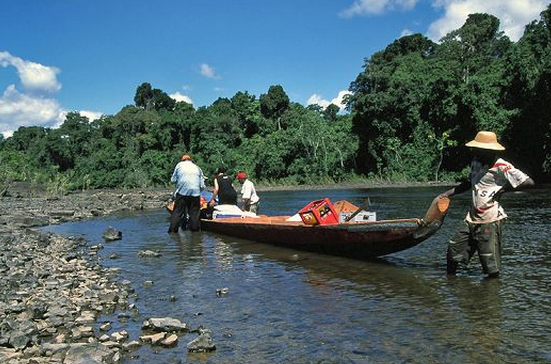
Suriname is located on the north-eastern coast of South America bordering French Guiana in the east, Brazil in the south, Guyana in the west, and the Atlantic Ocean in the north. The northern, lowland coastal area is particularly vulnerable to inundation and erosion of coastal zones and other negative impacts of climate change. Some of the proposed adaptation measures include: integrated coastal zone management, the efficient utilization of water resources, and the development of salt-tolerant crops.
Suriname’s climate is semi-humid, influenced by the behavior of the Inter Tropical Convergence Zone (ITCZ). The mean annual air temperature in Suriname is 27 degrees Celsius. Two rainy and two dry seasons occur annually. Suriname receives between 1500mm and 2500mm of rainfall each year. Suriname’s coastal zone is very fertile. 90 per cent of Suriname’s human activities such as agriculture and small industries are located here, along with a large share of the population. Coastal zones also include highly important ecosystems for the breeding and feeding of various species. The tropical rainforest in Suriname is one of the important natural resources, covering approximately 91 per cent or 15 million hectares of the total land area, of which about 2 million hectares or 13% has the status of Protected Areas.
The industrial base of Suriname is dominated by the mining and petroleum industries. To a lesser extent, the agricultural and tourism sectors also contribute to the country’s Gross Domestic Product (GDP). The vast majority of these industries are concentrated in coastal zones. Large-scale inundation associated with climate change could adversely affect these industries.
Reference: First National Communication 2005
- Sustainable development and the integration of climate change concerns into medium- and long-term planning
- Inventories of anthropogenic emissions by sources and removals by sinks of greenhouse gases
- Measures contributing to addressing climate change
- Research and systematic observation
- Climate change impacts, adaptation measures and response strategies
- Education, training and public awareness
Potential Adaptation Measures:
Agriculture and Food Security
- Enhance irrigation efficiency and/or expand irrigation
- Agricultural research and transfer of technology
- Develop new crops
Water Resources
- Increase water supply, e.g. by using groundwater, building reservoirs, improving or stabilizing watershed management, desalination
- Decrease water demands, e.g. by increasing efficiency, reducing water losses, water recycling, changing irrigation practices
- Improve or develop water management
Coastal Zones and Marine Ecosystems
- Develop Integrated Coastal Zone Management
- Protect, including building sea walls, and beach nourishment
In 1992, countries joined an international treaty, the United Nations Framework Convention on Climate Change, to cooperatively consider what they could do to limit average global temperature increases and the resulting climate change, and to cope with whatever impacts were, by then, inevitable.
Parties to the Convention must submit national reports on implementation of the Convention to the Conference of the Parties (COP). The required contents of national communications and the timetable for their submission are different for Annex I and non-Annex I Parties. This is in accordance with the principle of "common but differentiated responsibilities" enshrined in the Convention.
The core elements of the national communications for both Annex I and non-Annex I Parties are information on emissions and removals of greenhouse gases (GHGs) and details of the activities a Party has undertaken to implement the Convention. National communications usually contain information on national circumstances, vulnerability assessment, financial resources and transfer of technology, and education, training and public awareness.
Since 1994, governments have invested significant time and resources in the preparation, collection and validation of data on GHG emissions, and the COP has made determined efforts to improve the quality and consistency of the data, which are ensured by established guidelines for reporting. Non-Annex I Parties receive financial and technical assistance in preparing their national communications, facilitated by the UNFCCC secretariat.
Sri Lanka- Second National Communication
The creation of a National Communication offers countries the opportunity to contribute with technically sound studies and information that can be used for designing mitigation and adaptation measures, and project proposals that can and will help increase their resilience to the impacts of climate change. Activities generally include: V&A assessments, Greenhouse Gas Inventory preparation, Mitigation Analysis or Education, and awareness raising activities.The ultimate goal is the integration of climate change considerations into relevant social, economic and environmental policies and actions
Key vulnerabilities identified in Sri Lanka's Second National Communication (2011):
- Agriculture/Food Security
- Coastal Zones and Marine Ecosystems
- Water Resources
- Public Health
Assessments and Background Documents
Key adaptation measures identified in Sri Lanka's Second National Communication (2011):
Agriculture/Food Security
- Develop heat tolerant rice varieties as well as salt-tolerant rice varieties through plant breeding
- Reduce irrigation water losses
- Practice aerobic rice cultivation
- Introduce lowland rice cultivation with saturated soil instead of continuous submerged soil
- Practice economically viable options
- Adjust present cropping calendar
- Provide accurate seasonal weather forecasts to possibly reduce losses due to weather variability
Public Health
- Need for building awareness of the impacts of climate change on health
- Communication for behavioral change
- Educating favorable practices and support for inculcating and adopting these strategies
- Review current policies and formulation of new policies related to health implications of climate change
Coastal Zones
- Incorporate climate change concerns in town and country planning and wetland conservation programmes
- Accommodate seal level rise in the design of new coastal structures
- Design and cost new water intakes giving due consideration to sea level rise
- Prepare ground water extraction regulation policy
- Incorporate greater consideration of climate change impacts in the next revision of the Coastal Zone Management Plan.
- Sustainable development and the integration of climate change concerns into medium- and long-term planning
- Inventories of anthropogenic emissions by sources and removals by sinks of greenhouse gases
- Measures contributing to addressing climate change
- Research and systematic observation
- Climate change impacts, adaptation measures and response strategies
- Education, training and public awareness
In 1992, countries joined an international treaty, the United Nations Framework Convention on Climate Change, to cooperatively consider what they could do to limit average global temperature increases and the resulting climate change, and to cope with whatever impacts were, by then, inevitable.
Parties to the Convention must submit national reports on implementation of the Convention to the Conference of the Parties (COP). The required contents of national communications and the timetable for their submission are different for Annex I and non-Annex I Parties. This is in accordance with the principle of "common but differentiated responsibilities" enshrined in the Convention.
The core elements of the national communications for both Annex I and non-Annex I Parties are information on emissions and removals of greenhouse gases (GHGs) and details of the activities a Party has undertaken to implement the Convention. National communications usually contain information on national circumstances, vulnerability assessment, financial resources and transfer of technology, and education, training and public awareness.
Since 1994, governments have invested significant time and resources in the preparation, collection and validation of data on GHG emissions, and the COP has made determined efforts to improve the quality and consistency of the data, which are ensured by established guidelines for reporting. Non-Annex I Parties receive financial and technical assistance in preparing their national communications, facilitated by the UNFCCC secretariat.
Georgia- Second National Communication
The creation of a National Communication offers countries the opportunity to contribute with technically sound studies and information that can be used for designing mitigation and adaptation measures, and project proposals that can and will help increase their resilience to the impacts of climate change. Activities generally include: V&A assessments, Greenhouse Gas Inventory preparation, Mitigation Analysis or Education, and awareness raising activities.The ultimate goal is the integration of climate change considerations into relevant social, economic and environmental policies and actions
Key Vulnerabilities identified in Georgia's Second National Communication (2009):
- Coastal Zones and Marine Ecosystems: Eustasy – the rise of ocean (sea) level relative to land as a result of water thermal expansion and a change of fresh water balance in favour of the ocean;
- Storms – increase in frequency of storm surges and their power;
- Sedimentation – activation of solid sediment accumulation processes in glacier-fed river deltas;
- Change in sea surface water temperature – essential changes in thermal characteristics of the aquatic environment (sea currents resulting from changes in vertical circulation and other dynamics and thermal features).
Assessments and Background Documents
Potential Adaptation Measures identified in Georgia's Second National Communication (2009):
Measures to be implemented in the short term:
- Creation of permanent monitoring and early warning systems for Black Sea level rise and storm intensity;
- Establishment of a permanent Committee to plan and implement the adaptation measures to climate change,;
- Implementation of coastal zone protection measures in the Rioni Delta;
- Carrying out of sea shore protection measures at the Batumi-Adlia section aimed at the protection of the Batumi coastal zone;
- Preparation and implementation of adaptation measures for Lake Paliastomi. Long-term measures
- Assessment of climate change impacts on the development of tourism (heat waves, water temperature, beach degradation) and preparation of adaptation measures;
- Rehabilitation of eroded and salinised soils;
- Consideration of anticipated climate changes in the local infrastructure developmental process.
- Sustainable development and the integration of climate change concerns into medium- and long-term planning
- Inventories of anthropogenic emissions by sources and removals by sinks of greenhouse gases
- Measures contributing to addressing climate change
- Research and systematic observation
- Climate change impacts, adaptation measures and response strategies
- Education, training and public awareness
In 1992, countries joined an international treaty, the United Nations Framework Convention on Climate Change, to cooperatively consider what they could do to limit average global temperature increases and the resulting climate change, and to cope with whatever impacts were, by then, inevitable.
Parties to the Convention must submit national reports on implementation of the Convention to the Conference of the Parties (COP). The required contents of national communications and the timetable for their submission are different for Annex I and non-Annex I Parties. This is in accordance with the principle of "common but differentiated responsibilities" enshrined in the Convention.
The core elements of the national communications for both Annex I and non-Annex I Parties are information on emissions and removals of greenhouse gases (GHGs) and details of the activities a Party has undertaken to implement the Convention. National communications usually contain information on national circumstances, vulnerability assessment, financial resources and transfer of technology, and education, training and public awareness.
Since 1994, governments have invested significant time and resources in the preparation, collection and validation of data on GHG emissions, and the COP has made determined efforts to improve the quality and consistency of the data, which are ensured by established guidelines for reporting. Non-Annex I Parties receive financial and technical assistance in preparing their national communications, facilitated by the UNFCCC secretariat
Marshall Islands' Second National Communication
The creation of a National Communication offers countries the opportunity to contribute with technically sound studies and information that can be used for designing mitigation and adaptation measures, and project proposals that can and will help increase their resilience to the impacts of climate change. Activities generally include: V&A assessments, GHG inventory preparation, Mitigation Analysis or Education, and awareness raising activities. The ultimate goal is the integration of climate change considerations into relevant social, economic and environmental policies and actions.

Overall, the most appropriate and effective adaptation measures and strategies are most likely to be those that will be beneficial even in the absence of climate and sea-level change. Such measures and strategies could be considered as “no regrets” adaptation options. Therefore, in the first instance, the capacity of the Marshall Islands to adapt to the effects of climate and sea-level change will largely be determined by its ability to address on-going environmental, social and economic problems. Adaptation includes three main types of activities. First, there are adaptive actions that include activities targeted at specific sectors where climate change effects have been identified. Second, another group of adaptive measures are equally important and include general policies and actions by government to address some of the social driving forces of environmental problems which will heighten vulnerability to climate change effects. Third, it is also important to increase the capabilities of the Marshall Islands to effectively implement adaptations.
The Republic of the Marshall Islands (RMI) are located off the northeast coast of New Zealand, scattered in an archipelago consisting of two roughly parallel island chains. There are twenty nine atolls and five reefs without lagoons which are made up of about 1,225 islands and 870 reef systems. Twenty-two of the atolls and four of the islands are inhabited. The atolls extend about 700 miles (1130km) north to south, and about 800 miles (1290km) east to west. While some of the islands are several kilometers long they rarely exceed a few hundred meters in width and are often considerably narrower. Land elevations are very low, with a mean height above sea level of only two meters (7 feet). The combination of small land areas and low land elevations contributes to the ecological vulnerability in the Republic. There is concern that any change in sea-level could seriously upset the fragile balance between the land and the sea. The RMI consist of fragments of Islands or low Lying Atoll Courtesy of MIVA. Isolated by ocean, the Republic is more than 2,000 miles (3230km) from the nearest trading centers, Honolulu and Tokyo. Geographically, the RMI’s nearest neighbors are Kiribati to the south and the Federated States of Micronesia to the west. The Republic’s Exclusive Economic Zone (EEZ) encompasses over 750,000 square miles (1.2 million sq km) of the Central Pacific. Subsistence agriculture and fishing are the country’s main industry; the tourism industry makes a noteworthy contribution along with development funds from the United States.
- Institutional strengthening, such as by ensuring that governmental departments are adequately structured and equipped with appropriate skills and tools, and are capable of delivering an integrated response to the challenges arising from climate change and accelerated sea level rise.
- Project management and operational training for all stakeholders involved in climate change programs and the implementation of adaptation projects.
- Accurate documentation of baseline conditions from which to measure climate induced changes to the shorelines, reef and island ecosystem and affected settlements and communities.
- Research capacity needs to be strengthened by ensuring adequate support at the professional and technical levels, and by providing financial support for baseline bio-physical and socioeconomic environmental research, monitoring changes to environmental conditions and implementing adaptation measures.
- Appropriate systems are needed for spatial and other data generated through vulnerability assessments, monitoring programs,
integrated coastal zone management planning and the implementation of adaptation projects.
-
Confidence and capacity building programs are needed for government departments, members of local councils and nongovernment organizations.
-
Community awareness and education programs.
-
Proactive participation in international forums and meetings are needed with the aim of continuing to keep the issues confronting small island states, when they are responding to climate change.
- Land Use and Planning: amendment of land use planning policies to include adaptations to climate change.
- Environment and Natural Resources: amendment of environmental and natural policies to include adaptations to climate change.
- Natural Hazard Management: amendment of natural hazard management policies to include adaptations to climate change.
- Administration and Management: initiation of administrative arrangements and management policies to deal with the core sectoral concerns in terms of water resources, coastal resources, agricultural resources, marine resources and human health.
- Human Health: Development of a comprehensive suite of human health policies to address water borne diseases and other sicknesses that are related to climate-induced change.
- Solid and Liquid Waste Management: Provide broad management policies for domestic solid waste and discharges of liquid effluent including consideration of a strategy to convert solid domestic and some industrial wastes to saleable energy.
- Foreign Affairs: Enhancement of foreign policy frameworks.
- Center of Excellence: establish a Centre of Excellence to expand the role of the Marshall Islands in the international as well as national issues of climate change.
- Technology Exchange: technology exchange policies to address applied research and monitoring (information management).
More recently Marshall Islands developed the RMI Climate Change Roadmap 2010 as a national framework for their climate change and sustainable development efforts. With respect to adaptation, actions identified by the Marshall Islands Government included: the implementation of a Micronesia Challenge and Reimaanlok Action Plan; planning and interventions to address vulnerability in food security, public health and other social development areas; and protection and maintenance of key infrastructure and resources through planning and inter-agency coordination (FSF, 2010).
Current Adaptation Action
- Dohan, Rosemary; Hove, Hilary; Echeverría, Daniella; Hammill, Anne, Parry, Jo-Ellen. (2011) “Review of Current and Planned Adaptation Action: The Pacific.” Adaptation Partnership/International Institute for Sustainable Development, pp.82 - 88.
- Central Intelligence Agency [CIA] (2011). The World Factbook: Marshall Islands. Retrieved from https://www.cia.gov/library/publications/the-world-factbook/geos/rm.html
- Environmental Protection Agency [EPA] (2000). Marshall Islands. Initial Communication under the United Nations Framework Convention on Climate Change. Retrieved from http://unfccc.int/essential_background/library/items/3599.php?rec=j&priref=3433#beg
- Fast Start Finance [FSF] (2011). Marshall Islands. Retrieved from http://www.faststartfinance.org/recipient_country/marshall-islands
- Plume, H. (2002). Pacific Islands Climate Change Assistance Programme (PICCAP): New Zealand’s involvement. Presentation made to the UNFCCC CGE Workshop, 8 to 10 August 2002. Retrieved from http://unfccc.int/files/meetings/workshops/other_meetings/application/pdf/new_zealand.pdf
- Sustainable development and the integration of climate change concerns into medium- and long-term planning
- Inventories of anthropogenic emissions by sources and removals by sinks of greenhouse gases
- Measures contributing to addressing climate change
- Research and systematic observation
- Climate change impacts, adaptation measures and response strategies
- Education, training and public awareness
Potential Adaptation Measures:
Agriculture and Food Security
- Switch to different cultivars
- Develop new crops
Water Resources
- Increase water supply, e.g. by using groundwater, building reservoirs, improving or stabilizing watershed management, desalination
- Decrease water demands, e.g. by increasing efficiency, reducing water losses, water recycling, changing irrigation practices
Coastal Zones and Marine Ecosystems
- Develop planning/new investment requirements
- Protect, including building sea walls, and beach nourishment
In 1992, countries joined an international treaty, the United Nations Framework Convention on Climate Change, to cooperatively consider what they could do to limit average global temperature increases and the resulting climate change, and to cope with whatever impacts were, by then, inevitable.
Parties to the Convention must submit national reports on implementation of the Convention to the Conference of the Parties (COP). The required contents of national communications and the timetable for their submission are different for Annex I and non-Annex I Parties. This is in accordance with the principle of "common but differentiated responsibilities" enshrined in the Convention.
The core elements of the national communications for both Annex I and non-Annex I Parties are information on emissions and removals of greenhouse gases (GHGs) and details of the activities a Party has undertaken to implement the Convention. National communications usually contain information on national circumstances, vulnerability assessment, financial resources and transfer of technology, and education, training and public awareness.
Since 1994, governments have invested significant time and resources in the preparation, collection and validation of data on GHG emissions, and the COP has made determined efforts to improve the quality and consistency of the data, which are ensured by established guidelines for reporting. Non-Annex I Parties receive financial and technical assistance in preparing their national communications, facilitated by the UNFCCC secretariat.





